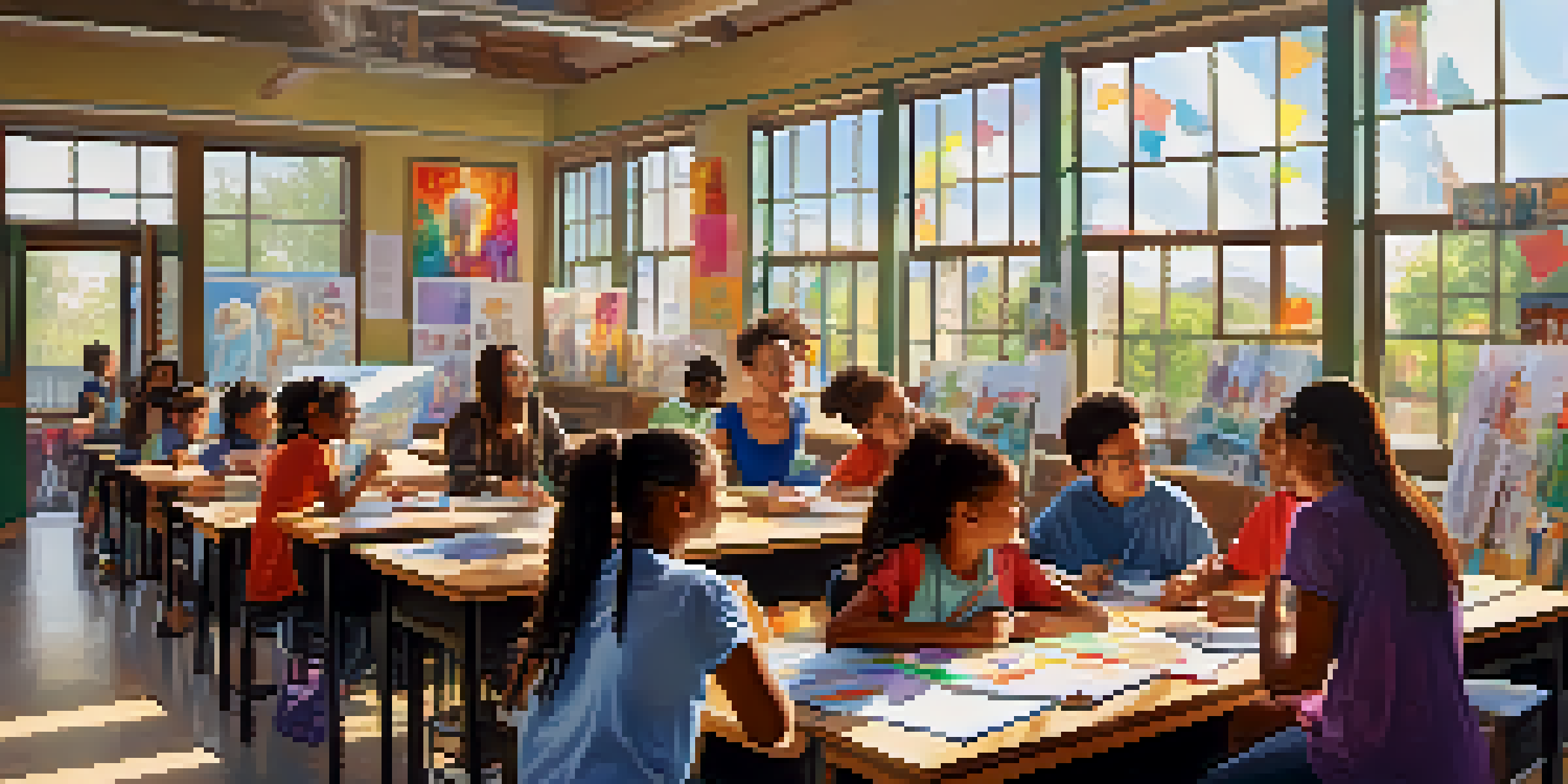Project-Based Learning: A Key to Student Engagement

Understanding Project-Based Learning and Its Benefits
Project-Based Learning (PBL) is an instructional approach that encourages students to learn by engaging in real-world projects. Unlike traditional learning methods, which often rely on rote memorization, PBL fosters critical thinking, collaboration, and creativity. Students take ownership of their learning, which leads to deeper understanding and retention of knowledge.
Project-based learning is a dynamic classroom approach in which students actively explore real-world problems and challenges, gaining a deeper knowledge through the process.
One of the significant benefits of PBL is that it connects classroom lessons to real-life applications. For instance, when students work on a project that addresses a community issue, they can see the impact of their work, making the learning experience more meaningful. This relevance boosts their motivation and leads to higher engagement levels.
Furthermore, PBL promotes the development of essential skills that students will use in their future careers. Skills like problem-solving, teamwork, and time management are cultivated through collaborative projects. As students navigate challenges together, they learn to communicate effectively and think critically, preparing them for success beyond the classroom.
Fostering Student Engagement Through Collaboration
Collaboration is at the heart of Project-Based Learning. When students work together on projects, they share diverse perspectives and ideas, creating a dynamic learning environment. This collaboration not only enhances engagement but also builds a sense of community among students, making them feel more connected to each other and their learning.

In a PBL setting, students often take on different roles, allowing them to contribute their unique strengths to the project. For example, one student might excel in research while another shines in presentation skills. This distribution of tasks keeps everyone engaged and encourages them to rely on one another, fostering camaraderie and teamwork.
PBL Enhances Real-World Learning
Project-Based Learning connects classroom lessons to real-life applications, making education more engaging and meaningful.
Moreover, collaborative projects often lead to more significant outcomes than individual efforts. When students are invested in a shared goal, they are more likely to put in the effort required to succeed. This collective investment not only enhances their commitment to the project but also makes the learning experience more enjoyable.
Real-World Connections: Making Learning Relevant
One of the standout features of Project-Based Learning is its emphasis on real-world connections. By tackling projects that address actual community needs or global issues, students can see the relevance of their studies. This connection to the outside world makes learning more engaging and impactful.
The essence of project-based learning is to engage students in solving real-world problems, promoting not only knowledge retention but also collaboration and critical thinking.
For instance, a project focusing on environmental sustainability can inspire students to develop solutions for local problems, such as reducing waste or conserving water. When students understand that their work can lead to tangible change, they become more motivated to engage deeply with the subject matter. This relevance transforms their perception of learning from a chore to an exciting challenge.
Additionally, making these real-world connections helps students develop a sense of responsibility and civic engagement. They begin to see themselves as active participants in their communities, which can foster a lifelong love for learning and a desire to contribute positively to society.
Encouraging Creativity and Innovation in Learning
Project-Based Learning encourages creativity and innovation by allowing students the freedom to explore their interests within a structured framework. Unlike traditional assessment methods, which often limit expression, PBL invites students to think outside the box and come up with unique solutions to problems. This freedom enhances engagement as students feel empowered to express their ideas.
For example, in a project about historical events, students might create a documentary, design a website, or even write a play. This variety not only makes learning enjoyable but also caters to different learning styles, ensuring that every student can find a way to shine. When students are excited about how they can express their creativity, they are more likely to remain engaged.
Collaboration Boosts Student Engagement
Working together on projects fosters a sense of community and enhances student motivation through shared goals.
Moreover, fostering a culture of innovation prepares students for future challenges. In a rapidly changing world, the ability to think critically and creatively will be essential. PBL cultivates this mindset, equipping students with the skills they need to tackle complex problems in their future careers and lives.
Developing Critical Thinking Skills Through PBL
Critical thinking is a vital skill in today's information-rich world, and Project-Based Learning is an excellent way to nurture it. As students engage in projects, they are constantly required to analyze information, evaluate sources, and make informed decisions. This process encourages deeper thinking and helps them develop a more nuanced understanding of the subject matter.
For instance, when working on a project about climate change, students must sift through various data sources, assess their credibility, and determine the best course of action. This analytical approach not only enhances their understanding of the topic but also equips them with the skills to navigate complex issues critically.
Additionally, the iterative nature of PBL allows students to learn from their mistakes. As they test their ideas and receive feedback, they refine their thinking and improve their solutions. This process of trial and error fosters resilience and adaptability, essential traits in both academic and professional settings.
Assessment and Feedback in Project-Based Learning
Assessment in Project-Based Learning differs from traditional methods; it focuses on the learning process rather than just the final product. Teachers can assess students' progress through regular check-ins, reflections, and peer evaluations. This ongoing feedback creates a supportive environment where students can grow and improve their work continuously.
For instance, rather than simply grading a project at its completion, a teacher might provide feedback on students' collaboration and problem-solving as they work. This approach encourages students to engage with the feedback actively, fostering a growth mindset where they view challenges as opportunities for improvement.
Fosters Creativity and Innovation
PBL encourages students to think creatively and explore their interests, preparing them for future challenges.
Furthermore, self-assessment plays a crucial role in PBL. Students learn to evaluate their contributions and reflect on their learning journey, enhancing their sense of ownership. This reflective practice not only deepens their understanding of the material but also prepares them for future learning experiences.
Implementing Project-Based Learning in the Classroom
Implementing Project-Based Learning in the classroom may seem daunting, but it can be achieved with thoughtful planning. Educators can start small by integrating PBL elements into existing lessons. For example, they might introduce a mini-project related to a current topic to test the waters and gauge student interest.
Collaboration among teachers can also enhance the implementation of PBL. By working together, educators can design interdisciplinary projects that connect subjects and make learning more cohesive. For instance, a project combining science and art could allow students to explore environmental issues creatively, fostering engagement across multiple disciplines.

Finally, providing students with the necessary resources and support is essential for a successful PBL experience. Teachers can guide students in project planning and execution, ensuring they have the tools to succeed. This support not only enhances student engagement but also leads to more meaningful learning experiences.